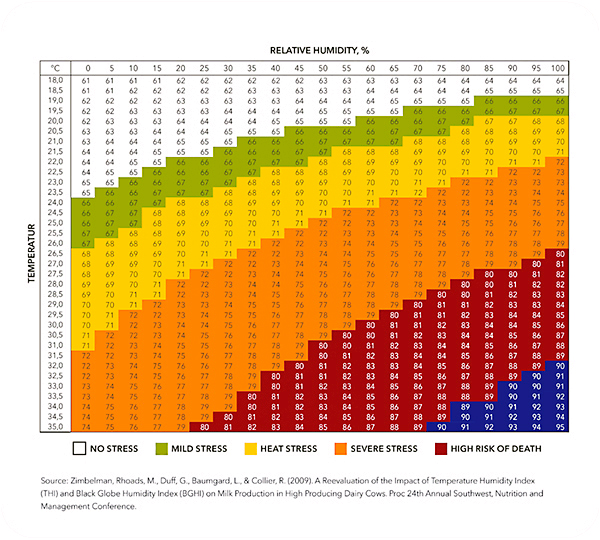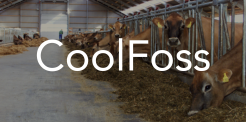Our Knowledge / Farm Solutions / High temperatures — a Challenge for Cows
High temperatures — a challenge for cows
A rise in ambient temperature during summer has a negative effect on high yielding dairy cows, and even more so when humidity increases too. Moreover, the quality of the TMR produced is impacted by increased temperatures and humidity, which, consequently, leads to a waste of feed.
Heat stress in cattle occurs when the animals generate and absorb more heat than they can easily get rid of by respiration. When ambient temperature increases in combination with increased humidity, cows tend to reduce feed intake and increase water consumption to regulate the body temperature. The feed also impacts the heat production.
When feed is broken down in the rumen, heat is produced and in combination with increased ambient temperature, rumen temperature increases, and feed intake is negatively impacted. Irregular feed intake due to heat inevitably leads to a high variability in rumen pH and risk of acidosis and consequently decreased productivity.
Effect of hot weather conditions in cows:

WHY FOCUS ON HIGH TEMPERATURES?
- Profitability: High temperatures reduce milk production and fertility in dairy cows, leading to lower yields and profits for farmers.
- Animal welfare: Heat stress causes discomfort and health issues in cows, such as dehydration and heat exhaustion, compromising their wellbeing.
- Sustainability: Heat stress increases water and energy needs for cooling and care, increasing the environmental impact and resource use in dairy farming.
Explore our solutions:
For the cow:



